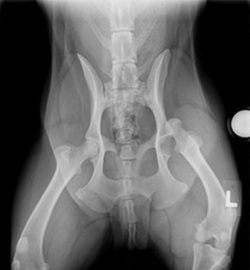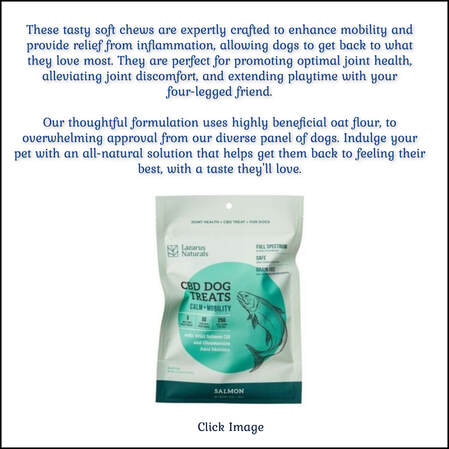By Examiner
Subluxation of the hip is a partial dislocation, mostly affecting large breeds of dogs. The common cause of this separation in young dogs is hip dysplasia and can be diagnosed as early as three to four months. Watch your dog for signs of discomfort through decreased activity and trouble getting up, climbing stairs or lying down. Subluxation affects the swivel of the hip, which causes your dog to hop around due to intense pain. If your dog exhibits any of these signs, consult your vet for an exam, which will include measuring a possible subluxation. As an educated pet parent, you can:
Request a test called Ortolani's Sign to measure hip laxity and subluxation. Hip laxity and subluxation are confirmed by a radiograph.
Subluxation of the hip is a partial dislocation, mostly affecting large breeds of dogs. The common cause of this separation in young dogs is hip dysplasia and can be diagnosed as early as three to four months. Watch your dog for signs of discomfort through decreased activity and trouble getting up, climbing stairs or lying down. Subluxation affects the swivel of the hip, which causes your dog to hop around due to intense pain. If your dog exhibits any of these signs, consult your vet for an exam, which will include measuring a possible subluxation. As an educated pet parent, you can:
Request a test called Ortolani's Sign to measure hip laxity and subluxation. Hip laxity and subluxation are confirmed by a radiograph.
- Ask your vet to place your dog in a weight-bearing position (your dog will be standing, putting weight on the affected area) while undergoing extensive radiography and computed tomography (medical imaging) techniques that determine the estimated degree of subluxation for each hip joint and the femoral head or ball joint of the hip.
- Request a new test called the Penn Hip method for measuring the laxity and subluxation of the hip to determine the distraction index (DI). This test serves as a measurement of passive hip laxity and the degree of looseness of the hip joint when your dog’s hips are completely relaxed.
- Question your vet if he is hesitant to get radiographic images, which can pinpoint the presence of changes in the subluxation of your dog’s hips, which is crucial and often camouflaged in commonly used X-rays.
Once your dog has gone through extensive testing, your veterinarian will work with you to find the type of treatment plans that is most advantageous to your dog. Surgery may be required to alter the hip socket or replacing the hip joint, depending on the severity of the subluxation in your dog’s hips. It is something you never want to experience with your dog and provide necessary care for your dog at the first sign of a hip or joint problem.
- A positive result of the Ortolani test would be for the head of the femur or thigh bone to move back into the acetabulum or cup-shaped socket, after being moved to the rim of the socket.
- The Penn Hip test shows a DI measurement, which ranges from 0 to 1. A dog with a DI of about 0.3 has tighter hips with less risk than a dog that has a DI of 0.6, which will have a greater risk of hip problems.
- Radiographic images are measured using a score of 0 to 5, with the higher scores indicating greater degrees of abnormality and changes in your dogs' hip subluxation and possible dysplasia.
Once your dog has gone through extensive testing, your veterinarian will work with you to find the type of treatment plans that is most advantageous to your dog. Surgery may be required to alter the hip socket or replacing the hip joint, depending on the severity of the subluxation in your dog’s hips. It is something you never want to experience with your dog and provide necessary care for your dog at the first sign of a hip or joint problem.
**Canine Arthritis And Joint is intended for informational, educational and entertainment purposes only and is not a substitute for medical advice, diagnosis or treatment. Do not attempt to self-diagnose or treat any health condition. You should always consult with a healthcare professional before starting any diet, exercise or supplementation program, before taking any medication, or if you have or suspect your pet might have a health problem. The opinions expressed by Canine Arthritis And Joint are not to be replaced for medical care. This website and the information contained herein have not been evaluated by the Food and Drug Administration. The information and opinions on Canine Arthritis And Joint are not intended and cannot be used to diagnose, treat, cure, or prevent any disease. This applies to people and pets!
This site uses affiliate links such as banners you may see that allows for paid commissions.
This site uses affiliate links such as banners you may see that allows for paid commissions.
Canine Arthritis And Joint © Copyright 2015-2024
Designed By Paw Prints Web Design
Designed By Paw Prints Web Design









